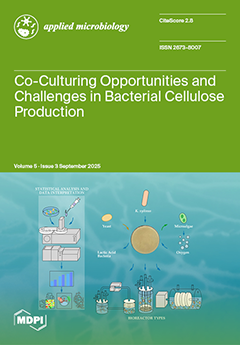Aflatoxin contamination of animal feeds may impact broiler chicken health and production. The adverse impact of aflatoxin can be ameliorated and detoxified by adding capable binding agents, such as
Saccharomyces cerevisiae. A total of 648 mixed gender 1-day-old Ross-308 were assigned to a 3 × 2 factorial experiment to investigate the effect of aflatoxin B1 (AF) and
Saccharomyces cerevisiae (SAC) on growth performance, blood parameters and carcass characteristics. Chickens were randomly allocated to dietary treatments consisting of three levels of AF at 0, 20 and 60 µg/kg, and with or without SAC (10
10 cells/kg) supplementation of 1 g/kg of dried yeast. Results showed that both AF and SAC increased average daily feed intake (both,
p < 0.001) and reduced feed efficiency (
p < 0.001 and
p = 0.035, respectively), while only AF reduced average daily gain (
p = 0.009). Supplementation with SAC improved the average daily feed intake in chickens subjected to AF60 (interaction,
p < 0.001), suggesting that SAC could improve the appetite of broilers. Chickens fed AF had a lower carcass weight (
p = 0.028) and heart weight (
p = 0.031), but higher carcass-normalized weight of gizzard (
p = 0.038) and liver (
p = 0.010). Aflatoxin administration reduced white blood cells (
p = 0.030), lymphocytes (
p = 0.029) and basophils (
p < 0.001), while increasing neutrophils (
p = 0.009). SAC reduced neutrophils (
p = 0.004) and mean corpuscular haemoglobin (
p < 0.001) while increasing lymphocytes (
p = 0.003) and basophils (
p = 0.015). The haematological results suggest that AF caused a disturbance in the immune system, compromising the health of the chicken, whereas SAC potentially mitigates these alterations. Dietary AF increased the activity of glutamate oxaloacetate transaminase (
p = 0.009). These findings suggest a potential use of
Saccharomyces cerevisiae as a natural binder to reduce aflatoxicosis in poultry production systems.
Full article




